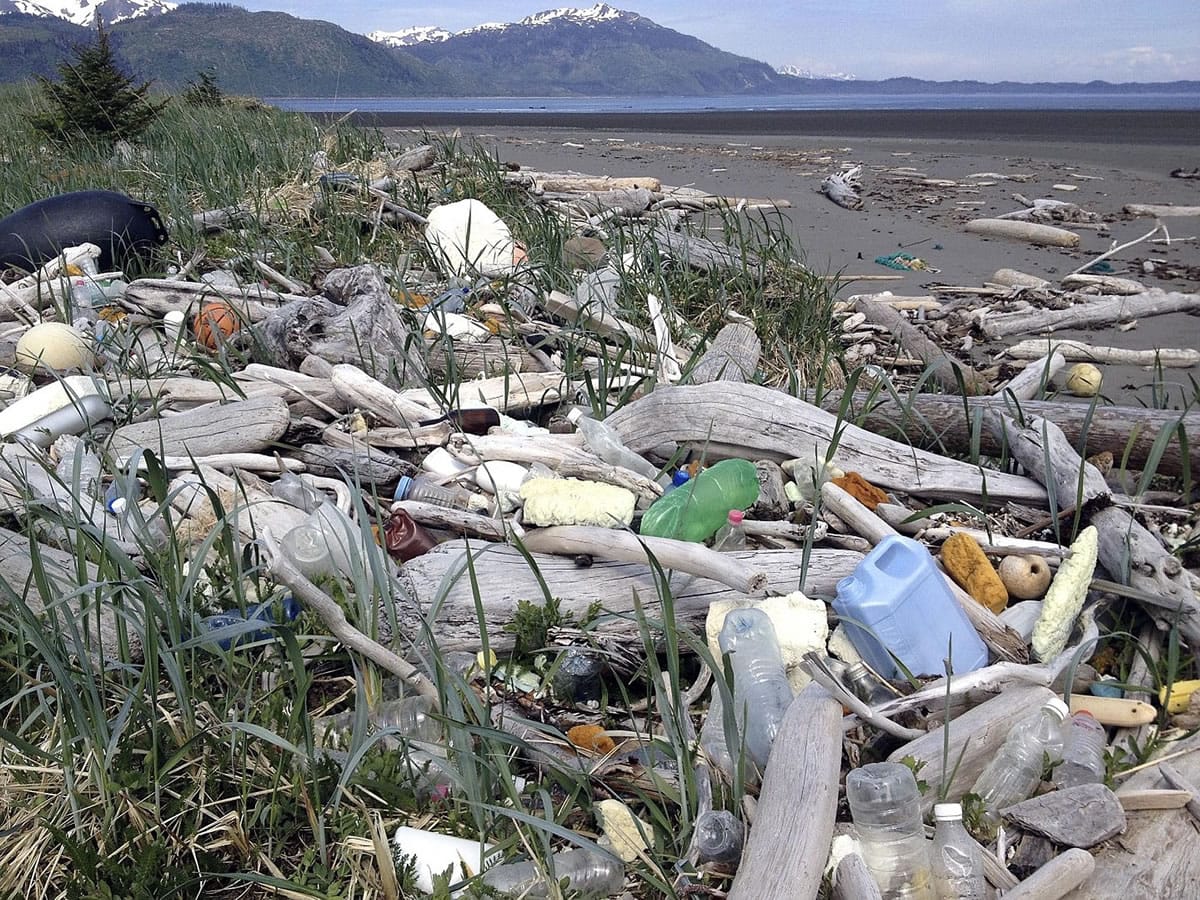JUNEAU, Alaska — A barge that will be used to haul away tons of marine debris from Alaska shores — some of it likely from the 2011 tsunami in Japan — arrived at Kodiak on Wednesday.
The project, massive in scope, will involve removing heavy-duty bags of debris cached above the high-tide line on remote beaches and stockpiled at a storage site in Kodiak as well as materials collected this year. From Kodiak, the barge is scheduled to make additional stops as it heads to Seattle, where debris will be sorted for recycling. Remaining debris will be sent by train for disposal in Oregon.
Depending on the tides, crews using dump trucks hoped to finish loading the bags from the Kodiak storage site Wednesday. The intent was to send the barge off by early this morning, ahead of a planned project kickoff event in Kodiak this afternoon, state Department of Environmental Conservation spokeswoman Candice Bressler said.
Bressler watched as the barge came in Wednesday morning. She called it majestic.
“It looked like it’s coming to town to save the day and get all of this stuff out of Alaska,” she said.



